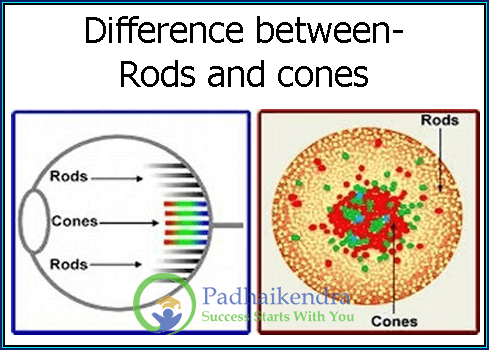Rods and cones are two types of photoreceptor cells located in the retina of the eye that is responsible for detecting light and transmitting visual information to the brain. They have different functions and characteristics.
Rods are more sensitive to low levels of light and are responsible for vision in dim or low-light conditions, such as night vision. They are more numerous than cones, with approximately 120 million rods in the human retina. Rods do not perceive color, but are more sensitive to shades of gray and provide black-and-white vision. They are also more densely packed in the peripheral retina, which is why we have better peripheral vision in low-light conditions.
Cones, on the other hand, are responsible for color vision and visual acuity, which is the ability to see fine details. They are most active in bright light conditions and are less sensitive to low levels of light than rods. There are three types of cones, each sensitive to different wavelengths of light, allowing us to perceive a wide range of colors. Cones are most densely packed in the central part of the retina, called the fovea, which is responsible for sharp, detailed vision.
In summary, rods are more sensitive to low levels of light, provide black-and-white vision, and are most densely packed in the peripheral retina, while cones are responsible for color vision and visual acuity, and are most densely packed in the central part of the retina.





